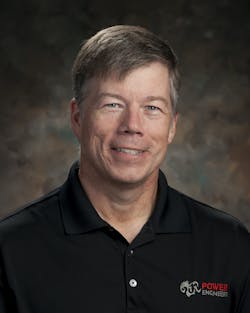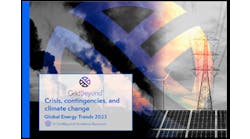Oasis Microgrids Speed Recovery from Large-Scale Electrical Events
In this week’s Industry Perspectives, POWER Engineers’ John Kumm explores natural disaster scenarios and the benefits of the oasis microgrid.
John Kumm,
POWER Engineers
A recent article in The New Yorker magazine [1] described a 9.0 magnitude earthquake that has the potential to strike the U. S. Pacific Northwest in coming years. Geologists have determined that a high-magnitude quake strikes the region on average every 245 years. The most recent quake on that fault line took place in 1700, so a recurrence is increasingly likely in the coming decades. A 9.0 magnitude earthquake just off the Washington and Oregon coasts would produce a tsunami comparable to the one that impacted Japan in 2011. Geologic factors west of the Cascade Mountains increase the potential damage to infrastructure in the Willamette Valley and Puget Sound for such a high-energy quake.
Emergency preparedness authorities have taken the research seriously. In June 2016, a preparedness exercise, Cascadia Rising [2], envisioned a 90th percentile event that would render inoperable much of the bulk electric power system west of the Cascade Mountains in Washington and Oregon. The quake would leave millions without electric power, natural gas, and communication services; severely impact emergency services; and leave over one million people homeless.
What steps can a utility take to be prepared to provide an electrical oasis in what would otherwise be an energy desert?
A Regional Microgrid for Disaster Recovery: The Oasis Microgrid
Figure 1: NERC Severe Impact Resilience Task Force Event Response Time-Frames [4]
The key challenge in defining an oasis microgrid is to identify a stable, operable mix of generation, transmission, and distribution resources sufficient to energize critical loads. The oasis microgrid can also serve as a synching source to facilitate operation of distributed energy resources (DER). Similar concepts and approaches have been used effectively in other locales, as described in [3]. The desired sequence of operations in response to the catastrophic event scenario and the preparatory planning necessary to make the activity feasible are described below. Severe event nomenclature used below is that proposed by the NERC Severe Impact Resilience Task Force [4], and represented in Figure 1.Before the catastrophic event, the local electric system serves distribution load using power imported from the bulk electric system and supplemented by local generation. Critical emergency and public safety loads are served by the distribution system. Privately owned DER are also connected to the distribution system, but are not controlled by the utility beyond establishment of appropriate interconnection and metering rules.
The planning scenario suggests that the bulk-electric system would be severely damaged by the earthquake and that repair may take weeks or months. The extent of damage to the local sub-transmission and distribution system will take time to fully assess, but most scenarios predict that—for the subject utility service area—some of the local assets will be operable within a short period of time. Critical medical and public safety loads would be re-energized first, followed by important communications, water and waste water, and public shelter facilities, to the degree permitted by available local generation.
In the Mitigation period following the severe event, utility staff can assess system damage then restore undamaged system elements. Severely damaged sections are cataloged for later attention. Restoring additional distribution system elements provides synching voltage for DERs that produce additional energy.
Finally, in the New Normal phase, sufficient system repairs have been made and generation added that the utility can provide periodic service to non-critical loads. This phase lasts until bulk electric system service is restored some weeks or months later.
Preparation for an Oasis Microgrid
The oasis microgrid concept rests on several founding assumptions:
• The high-impact event will leave some local assets undamaged or quickly repairable.
• Local real and reactive power resources are adequate to energize and support critical loads.
• Black start resources exist to permit initial system re-energization.
To prepare for such an event and recovery requires substantial advance planning and study in several categories:
• Post-Event Resources Inventory
• Oasis Microgrid Performance Analyses
• Black Start Preparations
• Protective Relaying Performance Review
• SCADA and Control Review
• DER and Emergency Generator Support
• Recovery Spares Warehousing
• Operating Plan Preparation
Conclusion
Oasis microgrid planning helps speed utility response and recovery to disaster scenarios of several sorts. These activities improve local resiliency and encourage DER use, but they also make the staff and system more robust for more probable, lower impact events. As traditional microgrid economics and regulations become more favorable, oasis microgrid planning may offer one more reason for private owners to install them. Finally, these preparations serve to create a more flexible electric grid that can operate more reliably at nearly any available scale.
References
[1] K. Schulz, “The Really Big One” The New Yorker, July 20, 2015
[2] The Washington and Oregon Whole Community Exercise Design Committee, “Cascadia Rising Exercise Scenario Document,” January, 2015
[3] C. Abbey, et al., “Powering Through the Storm: Microgrids Operation for More Efficient Disaster Recovery,” in IEEE Power and Energy Magazine, vol. 12, no. 3, pp 67-76, May-June 2014
[4] NERC Severe Impact Resilience Task Force, “Severe Impact Resilience: Considerations and Recommendations,” May 9, 2012







